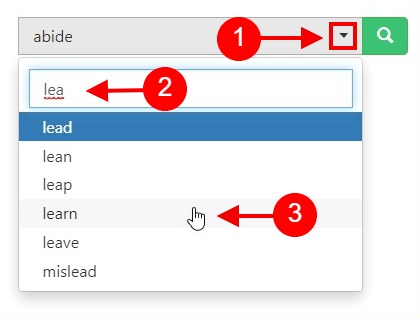Pasado de throw
* Esta forma es obsoleta o se usa en casos especiales o en algunos dialectos
Verbos irregulares relacionados:
Infinitivo
Pasado
Participio
overthrow
[ˌəʊvəˈθrəʊ]
overthrew
overthrowed
[ˌəʊvəˈθruː]
[ˌəʊvəˈθruːd]
[ˌəʊvəˈθruːd]
overthrew
overthrowed
[ˌəʊvəˈθruː]
[ˌəʊvəˈθruːd]
[ˌəʊvəˈθruːd]
Artículos recientes
- Pasado simple y pasado continuo
- Estructura del pasado continuo
- Adverbios de pasado continuo
- Verbos en pasado continuo en inglés
- Oraciones interrogativas en pasado continuo
